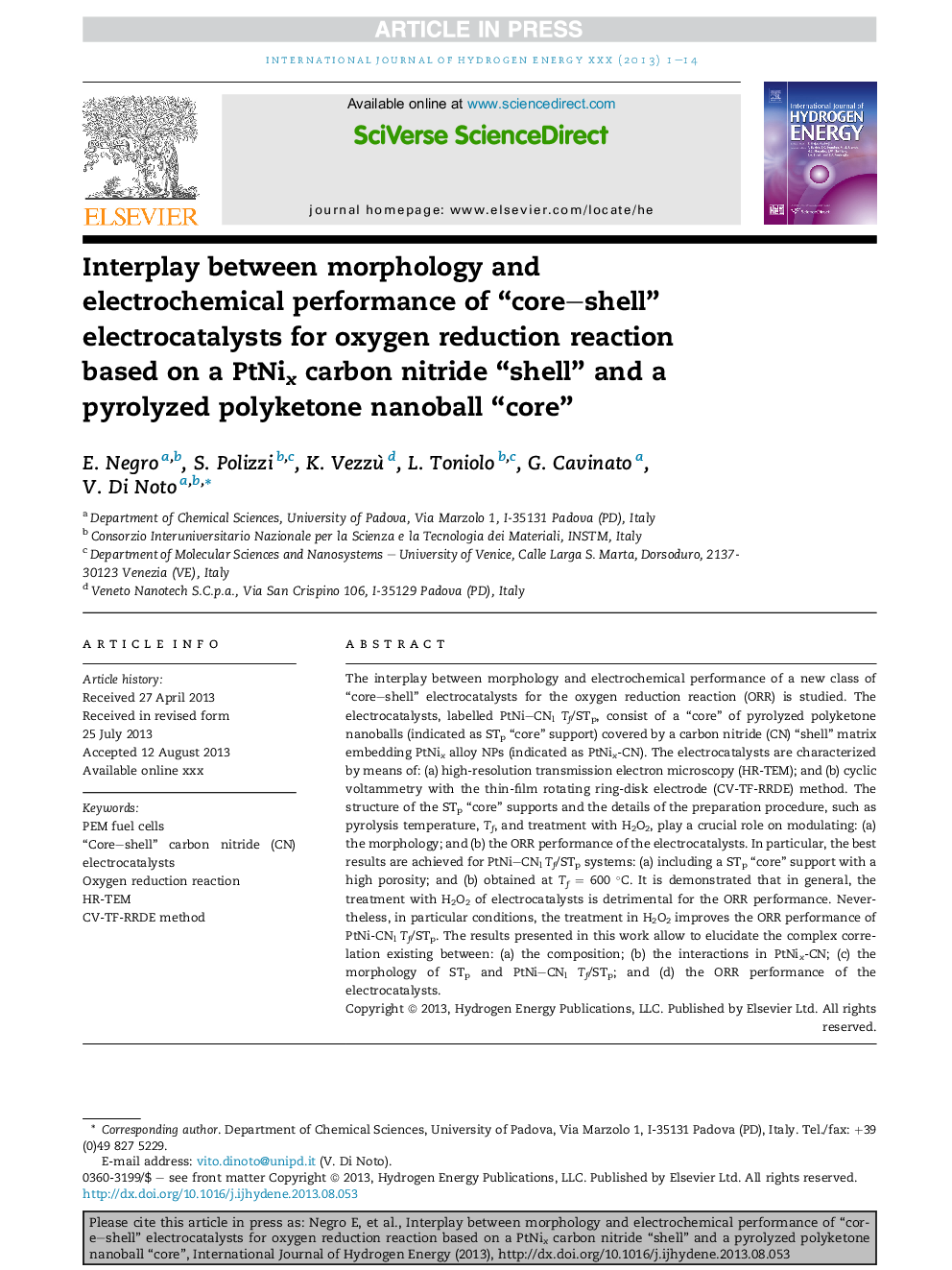| Article ID | Journal | Published Year | Pages | File Type |
|---|---|---|---|---|
| 7720601 | International Journal of Hydrogen Energy | 2014 | 14 Pages |
Abstract
The interplay between morphology and electrochemical performance of a new class of “core-shell” electrocatalysts for the oxygen reduction reaction (ORR) is studied. The electrocatalysts, labelled PtNi-CNlTf/STp, consist of a “core” of pyrolyzed polyketone nanoballs (indicated as STp “core” support) covered by a carbon nitride (CN) “shell” matrix embedding PtNix alloy NPs (indicated as PtNix-CN). The electrocatalysts are characterized by means of: (a) high-resolution transmission electron microscopy (HR-TEM); and (b) cyclic voltammetry with the thin-film rotating ring-disk electrode (CV-TF-RRDE) method. The structure of the STp “core” supports and the details of the preparation procedure, such as pyrolysis temperature, Tf, and treatment with H2O2, play a crucial role on modulating: (a) the morphology; and (b) the ORR performance of the electrocatalysts. In particular, the best results are achieved for PtNi-CNlTf/STp systems: (a) including a STp “core” support with a high porosity; and (b) obtained at Tf = 600 °C. It is demonstrated that in general, the treatment with H2O2 of electrocatalysts is detrimental for the ORR performance. Nevertheless, in particular conditions, the treatment in H2O2 improves the ORR performance of PtNi-CNlTf/STp. The results presented in this work allow to elucidate the complex correlation existing between: (a) the composition; (b) the interactions in PtNix-CN; (c) the morphology of STp and PtNi-CNlTf/STp; and (d) the ORR performance of the electrocatalysts.
Related Topics
Physical Sciences and Engineering
Chemistry
Electrochemistry
Authors
E. Negro, S. Polizzi, K. Vezzù, L. Toniolo, G. Cavinato, V. Di Noto,
